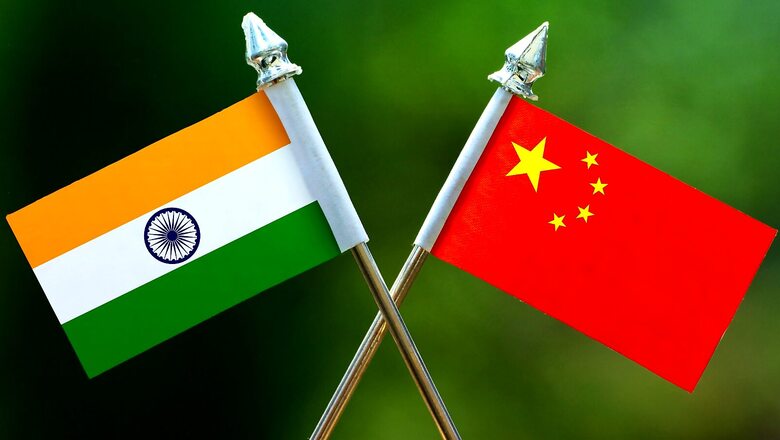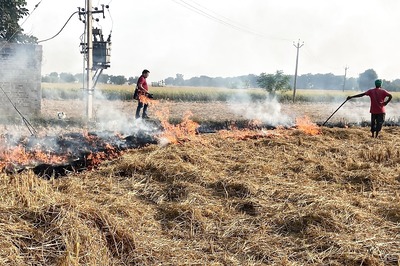
views
It’s been more than two years since tensions erupted on the India-China border leading to multiple standoffs across the Line of Actual Control (LAC) in eastern Ladakh. The border also witnessed violent physical clashes leading to the death of 20 Indian soldiers and at least four PLA soldiers at Galwan Valley on June 15, 2020. This was the first death on the disputed border since 1975. Since then, both sides have moved over two and a half divisions of armed forces in advanced positions and alert posture across the LAC – with the tripwire waiting to trigger at the sub-zero temperatures.
The two sides have conducted multiple Corps Commander-level meetings, Working Mechanism for Consultation and Coordination meetings, and foreign minister-level meetings to achieve de-escalation in the past two years. But the border crisis is still far from over. The problems had erupted in five-six places on the LAC – Galwan Valley, Pangong Lake, Charding Nullah junction in Demchok, Depsang, Hot Springs and Gogra in 2020. Since then, the two sides have managed to achieve disengagement at three points – Galwan Valley, Gogra, Pangong north and south banks. However, forces are still engaged in other areas and on alert posture across the entire LAC.
India claims that the border problems and normal relations cannot go hand-in-hand, and since China initiated and escalated the crisis, the onus of achieving the April 2020 status quo ante is on the People’s Republic of China (PRC). In contrast, China claims that the border dispute and bilateral relations should be viewed separately, and the former shouldn’t disturb or impact the latter.
China’s Confused India Policy: A Driver for Current Standoff
In recent years, China’s policy approach toward India has looked confused. This confusion stems from China’s genuine desire to maintain stable relations with India – in order to maintain peace and stability in its primary strategic military direction (Taiwan and the US), benefit from bilateral trade, and gain access to India’s market. But there is also rising hostility with India due to its increasing closeness to the United States – which China believes is a part of the US strategy of containment. These contradictory beliefs have pulled China’s India policy in opposite directions, making it look confusing.
For instance, a border crisis erupted in Chumar, the southern-most portion of Ladakh’s boundary with Tibet, in September 2014 during the Chinese Communist Party (CCP) General Secretary Xi Jinping’s maiden visit to India. Earlier, in October 2013, China and India signed a border defence cooperation agreement setting a positive tone for future talks between the two sides. However, just a few months before signing this agreement, during the negotiation period, a platoon-sized PLA contingent intruded deep inside the Depsang Plateau and pitched tents in the Indian territory violating confidence-building measures. This pattern had repeated itself throughout the decade when every major diplomatic milestone between India and China was either preceded or followed by Chinese intrusion leading to military standoffs on the border. The latest one is the ongoing border crisis, which was after two years of peace and informal summits at the highest level in 2018 and 2019.
Scholars have described this behaviour as a trick out of the Chinese playbook where they attempt “two steps forward, one step back” – leaving them with the net gain of one step. But rather than being a well-thought policy approach, Chinese behaviour emerges from policy confusion while dealing with India. That’s because, like every other rational actor, China would want to avoid a two-front escalation. Its primary military-strategic direction since 1993 is Taiwan and the possible conflict with the US over the Cross-Strait crisis. Naturally, it would want to averse a conflict on the western border with India. And thus, India and China witnessed a relative period of peace between 1993 and the early 2010s, when the two countries signed six border agreements.
However, the emerging strategic competition between the US and China, which is due to a combination of structural and domestic factors, like the US pivot to Asia, changes brought due technological evolution, China’s change of approach to foreign and security policy under former General Secretary Hu Jintao and organisational reforms to military and foreign policy structures under Xi, has widened the strategic fault line in the Indo-Pacific region. India and China are on the opposite ends of this divide, with China worried about India’s political and military alignment with the US – despite India maintaining that it follows the policy of “strategic autonomy”.
The convergences of interests are challenging since India demands material concessions like border settlement. It can only give strategic autonomy in return – which can be reversed anytime. Thus, the Chinese security and foreign policy apparatus looks like it’s confused about whether to alienate India for territorial gains or to appease it for intangible and reversible promises. This theme also emerges from its discussion leading up to the ongoing border standoff, which Antara Ghosal Singh, a research fellow with Strategic Studies Programme at Observer Research Foundation, captures in her meticulously researched paper on China’s evolving strategic discourse on India. Her paper highlights China’s domestic debates and discussions on India in the years preceding the Galwan clash and thereafter, and provides a comprehensive understanding of the circumstances that might have led to the border crisis by situating it within the overarching framework of Chinese foreign policy and global strategy and decision-making.
This confusion is also one of the broad drivers for the ongoing military standoff besides primary factors and immediate triggers like improving border infrastructure on both sides and possibly reversal of special status to Jammu and Kashmir, which included Ladakh – the ground zero for the ongoing crisis.
ALSO READ | With China Back on USA’s Radar, the Quad is on Track With Renewed Vigour
Suyash Desai is a research scholar specialising on Chinese security and foreign policies. He is currently studying Mandarin at National Sun Yat-sen University, Taiwan. The views expressed in this article are those of the writer and do not represent the stand of this publication.
Read all the Latest Opinions here




















Comments
0 comment